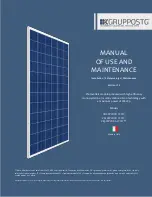
- 13 –
______________________________________________________________________
in_hypalm_aw1_v3.doc
Principle of Measurement
The standard (or conventional) method of measuring water activity consists in placing a sample of
the product to be measured in a sealed container. The product sample slowly exchanges
moisture with the air inside the sealed container until equilibrium is reached. Experience shows
that even with a relatively small amount of product, it is the moisture contained in the product that
ends up determining the humidity of the air, and not vice versa.
As an alternative, it is also possible to insert a probe in the product (insertion probe).
The equilibration process is monitored by measuring the humidity of the air above the product
with a relative humidity sensor (%RH = 100 x Aw). Because temperature is an important factor
when measuring water activity, the temperature of the air above the product, is also monitored.
By definition, water activity is equal to %RH / 100 when equilibrium has been reached. At that
time, the product no longer interchanges moisture with the surrounding air.
The following uses the Rotronic AW-DIO water activity probe as an example.
General Recommendations
1. Preparation of the product samples
The AwVC-DIO probe can be used with two different sample holders (WP-14: shallow / WP-40:
deep), corresponding to two sizes of disposable sample cups (PS-14: shallow / PS-40: deep).
Use the shallow sample cups (PS-14) and the shallow sample holder (WP-14) for calibrating the
probe with the Rotronic certified humidity standards or with saturated salt solutions. In general,
use the shallow cups for a liquid, a paste or a powder. Use the deep sample cups (PS-40) and














































